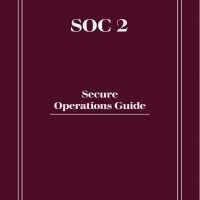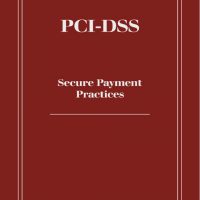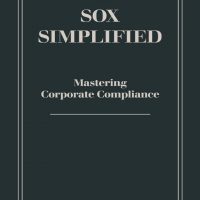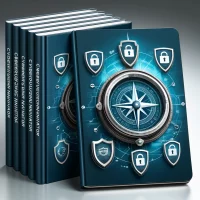I recently had the chance to dive deep into “NIST Framework: The CISO’s Compass,” and I must say, it’s quite the comprehensive guide for anyone entwined in the realms of cybersecurity management. What stands out immediately about this book is how it not only demystifies the NIST Framework but also turns it into a navigable map for Chief Information Security Officers (CISOs) and their teams.
The NIST Cybersecurity Framework, developed by the National Institute of Standards and Technology, is a beacon for organizations aiming to enhance their cybersecurity measures. The book starts off with a primer on the framework, detailing its inception and the broad acceptance it has gained globally. This isn’t just a dry recount; the book illustrates its evolution with engaging narratives and relevant analogies that connect the dots between complex regulatory environments and practical cybersecurity measures.
Where “The CISO’s Compass” truly shines is in its practical application of the NIST Framework. It breaks down the core components—Identify, Protect, Detect, Respond, Recover—into actionable advice that feels tailored to today’s CISOs. Each element is dissected with a clarity that is often missing in more technical guides. For instance, the ‘Identify’ function is detailed not only in terms of what needs to be identified within an organization but also how to do it in a structured way that aligns with business objectives.
The real-world applications and case studies peppered throughout the chapters bring the theory to life. These aren’t just hypotheticals; they’re drawn from a broad spectrum of industries, showing how versatile and crucial the NIST Framework can be. Whether it’s a financial institution mitigating risks or a healthcare provider safeguarding patient data, the book showcases varied scenarios where the framework provides foundational support for managing and responding to cybersecurity threats.
One of the most valuable aspects of the book for me was its focus on the strategic role of CISOs. It goes beyond technical responsibilities and delves into how CISOs can influence boardroom decisions. There’s an entire section dedicated to integrating cybersecurity strategy with business strategy, emphasizing the importance of CISOs communicating effectively with other C-suite executives. This is gold for any CISO who needs to justify cybersecurity investments or explain the ROI of enhanced security measures.
Moreover, the book does not shy away from the adaptive challenges of cybersecurity. It addresses emerging technologies like artificial intelligence (AI) and the Internet of Things (IoT), discussing how the NIST Framework can be applied to new and upcoming digital landscapes. This forward-thinking approach ensures that the reader is not just equipped for today’s challenges but is prepared for future shifts in the cybersecurity paradigm.
“NIST Framework: The CISO’s Compass” is an essential read for cybersecurity leaders. It transforms the NIST Framework from a regulatory requirement into a strategic tool that empowers security leaders to drive meaningful changes in their organizations. The author’s clear, knowledgeable, and engaging writing style makes a typically dense topic accessible and actionable. Whether you’re a seasoned CISO or new to the field, this book is a valuable addition to your professional library, providing insights and strategies that will undoubtedly enhance your approach to cybersecurity.
An Interview with the Author
Interviewer: Thank you for joining us today. Your book, “NIST Framework: The CISO’s Compass,” has been a notable guide for CISOs navigating cybersecurity complexities. What motivated you to write this book?
Author: Thank you for having me. My motivation stemmed from observing a gap in the practical understanding and application of the NIST Framework among cybersecurity professionals, especially those stepping into CISO roles. While the framework is a robust tool for managing cybersecurity risks, many struggle with its practical implementation. I wanted to create a guide that not only explains the framework but also makes it actionable for CISOs to integrate it into their strategic operations.
Interviewer: The NIST Framework is comprehensive. How did you approach breaking it down into manageable parts for your readers?
Author: I approached it by focusing on the core functions of the NIST Framework—Identify, Protect, Detect, Respond, and Recover. For each function, I provided real-world scenarios and case studies to illustrate how these can be applied across different industries. My aim was to move beyond theoretical explanations to show practical applications, helping readers visualize how these principles can be adapted to their own organizational needs.
Interviewer: Your book places a strong emphasis on the strategic role of CISOs. Why do you believe this perspective is crucial for today’s cybersecurity leaders?
Author: Today’s digital landscape means that cybersecurity impacts every aspect of a business. CISOs need to be more than technical experts; they must be strategic thinkers who can communicate risk and strategy to the boardroom. This perspective is crucial because it elevates the role of the CISO from a backend IT function to a front-line strategic role that directly contributes to the organizational resilience and business continuity.
Interviewer: Can you discuss how emerging technologies like AI and IoT are addressed in your book regarding the NIST Framework?
Author: Absolutely. The book discusses how the NIST Framework can be adapted to address the unique challenges posed by emerging technologies such as AI and IoT. These technologies introduce new risk vectors and require a dynamic approach to the cybersecurity framework. I’ve included sections on predictive analytics, machine learning, and how IoT devices expand the attack surface, offering strategies to mitigate these risks within the framework’s guidelines.
Interviewer: Finally, what is the one key takeaway you hope readers will gain from “NIST Framework: The CISO’s Compass”?
Author: The key takeaway I hope readers will gain is the understanding that the NIST Framework is not just a compliance tool but a strategic asset that can guide comprehensive cybersecurity governance. My goal is for CISOs and cybersecurity professionals to use this book to not only navigate the framework more effectively but also use it to shape cybersecurity practices that are integrated, dynamic, and aligned with their business’s strategic objectives.
Explore Essential Cybersecurity with the “Cybersecurity Compliance Navigator” Series
I’m excited to share that “NIST Framework: The CISO’s Compass” is part of an invaluable series titled “Cybersecurity Compliance Navigator.” This collection includes several key guides like “SOX Simplified,” “PCI-DSS Decoded,” “HIPAA: Healthcare Privacy Strategies,” and “SOC 2: Secure Operations Guide.” Designed for cybersecurity professionals grappling with compliance, this series breaks down complex regulations into manageable insights, offering practical advice for navigating the intricate world of cybersecurity compliance. It’s an essential toolkit for anyone dedicated to upholding cybersecurity standards and safeguarding digital environments across industries.



















